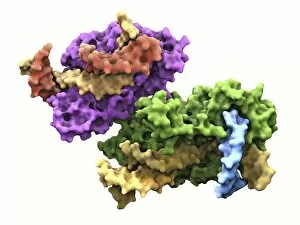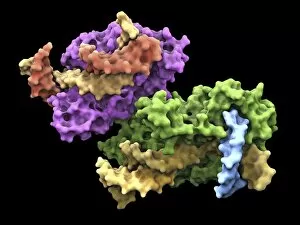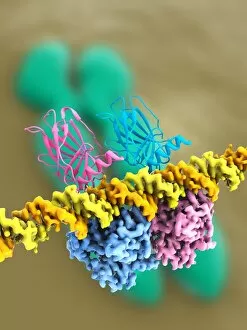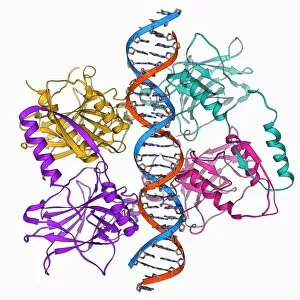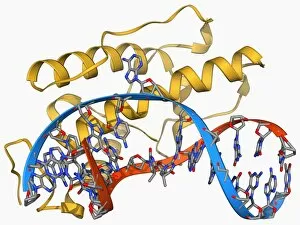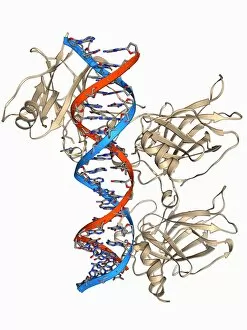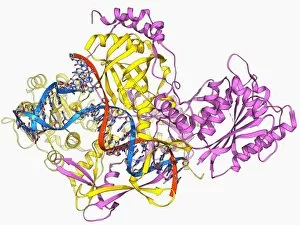Dna Repair Collection
"Unraveling the Secrets of DNA Repair: Exploring Flap Endonuclease Proteins and Tumor Suppressor Proteins" In the intricate world of DNA repair
All Professionally Made to Order for Quick Shipping
"Unraveling the Secrets of DNA Repair: Exploring Flap Endonuclease Proteins and Tumor Suppressor Proteins" In the intricate world of DNA repair, scientists have discovered a fascinating group of proteins that play crucial roles in maintaining our genetic integrity. Among them are the Flap endonuclease protein F007/9914 and F007/9916, which act as molecular scissors to remove abnormal structures called flaps from DNA strands. Another key player is the tumor suppressor protein C017/3645, known for its ability to prevent uncontrolled cell growth and maintain genome stability. Its molecular model reveals an intricate structure that interacts with damaged DNA, orchestrating repair processes within our cells. Speaking of tumor suppressor proteins, we also encounter F006/9729 and F006/9564 in their dynamic dance with DNA molecules. These proteins not only safeguard against mutations but also actively participate in repairing damaged sections of our genetic blueprint. Zooming into the microscopic level, we find ourselves captivated by detailed molecular models showcasing these remarkable tumor suppressor proteins (F006/9451 & F006/9450). Their elegant architecture highlights their importance in preserving genomic integrity and preventing cancerous transformations. But it's not just about tumor suppression; DNA repair enzymes like F006/9704 and F006/9726 take center stage too. These enzymes possess extraordinary abilities to mend broken or distorted DNA strands caused by various factors such as radiation or chemical damage. Their precise mechanisms ensure that errors are rectified before they can lead to harmful consequences. Amidst this complex web of cellular guardianship stands a bacteriophage restriction enzyme (F006 / 9531), reminding us that even viruses have evolved strategies to manipulate host genomes for their own survival. As researchers continue unraveling the mysteries surrounding these fascinating entities, one thing becomes clear – understanding how these proteins interact with our genetic material brings us closer to developing novel therapies for genetic disorders and cancer.

